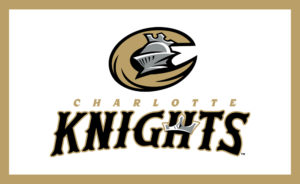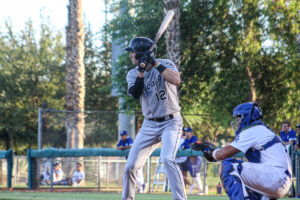In-Person Reports, May 2017 – Charlotte hitters
***Rob Young contributed to this report
Rob and I saw the Charlotte Knights in person on May 6th and 7th, as part of our tour of the affiliate clubs. We took video, conducted interviews, spoke with coaches, scouts and front office staff, and of course watched the prospects in action.
This post will focus on what we saw and heard about some key position player prospects in AAA, at the doorstep of the majors. All four of these players are likely to see the majors at some point this year. We’ll break it down player by player, with video, some quotes and our thoughts on each.
Yoan Moncada
You didn’t think we’d start with someone else, did you?
Yoan Moncada is the best prospect not only in the White Sox system but, by most accounts, in all of baseball. There is a lot to dream on here. Physically he looks like he should be modeling for Under Armour, and he oozes athleticism. He’s got plus speed that is a weapon on the basepaths and on defense. At the plate he shows some of the most impressive bat speed in the game, and hits for power to all fields from the left side. He works counts and draws plenty of walks, forcing pitchers to make mistakes he can drive. Defensively, he’s got plenty of athleticism and more than enough arm to do well at second base, where the White Sox are planning to station him.
Seeing Moncada in person is an experience. He’s a special talent, and one is hard-pressed to find flaws. That said, maybe it’s worth exploring the few minor concerns. First, his defense at second is still inconsistent, and more reps will allow that athleticism to come all the way through. He does make some spectacular plays there already. Second, he’s struck out at a pretty high clip as a pro and even a little more so this year (though lately he’s brought that down a bit). Then there’s the fact that he’s not nearly as dangerous a hitter from the right side, at least not yet. So yes, there are things he can still work on in AAA.
But, I mean, let’s look at the tape:
The bat speed, the foot speed, the power. He hit a double on that play, but also homered, singled, walked and stole a base in that game. But on the flip side, let’s take a look at his right-handed swing:
Moncada is a little stiffer from the right side, but displays a similarly excellent approach and violent bat speed. In this particular at bat, he worked the count then leaned into an outside pitch, driving it to the warning track. It was an impressive display of strength considering he was off-balance and the pitch was not in his wheelhouse. Moncada has more swing-and-miss in his right-handed swing thanks to less barrel control, but he has already demonstrated more aptitude than the previous year, which is very encouraging.
This is a player who will probably be at least a solid major leaguer, and has a real chance to be a star. It’s OK to get excited about this guy, Sox fans. He won’t be in Chicago before May 15th, the date after which he doesn’t give up a year of cheap control due to service time in the majors. But the way he’s making International League pitching look silly so far this year, it’s likely Moncada comes up pretty soon after.
Nick Delmonico
While Moncada gets a lot of attention, it’s possible that Nick Delmonico might arrive in Chicago first. The 24-year old has taken a winding and fascinating path to get where he is, one that could be a full article on its own – so you can read his prospect profile and this interview to get that background if you should want it. Let’s dive into the here and now.
At the plate, Nicky’s swing is a picture of controlled violence. The bat is quick, he generates loft and hits the ball hard with regularity. The raw power has been developed in the last couple years, and he now shows as a solid 50 on that scale with potential for 60 FV. As for plate approach, he’s also taken to working longer counts and being more selective. The walk rates haven’t changed, but his strikeout rate is down substantially this season as a result of that increased patience.
Here’s a video of Delmonico drawing a walk after a two-and-a-half minute plate appearance:
While his bat appears ready to provide value in MLB today, the biggest questions are around his defense. He’s been playing almost exclusively at third this year. There his glove work is inconsistent but can play well for stretches. He’s a bit stiff in his movements, but he has plenty of arm and athleticism for it. Fluidity may come with more time there, as he’s moved around the diamond over the years. Last year he also played some first and even corner outfield, but the samples were too small to draw conclusions as to how he’d play at either one in the long term.
There is a path to Chicago laid out for him, taking on some of the role Cody Asche plays today. He could be primarily a DH, while also playing some first and third when needed to get full time work. Noted for his high intensity on the field, it won’t be a surprise to see him make it to the majors in the next few months.
Danny Hayes
Speaking of players who’s path leads to a DH and/or corner infield role, there is also Danny Hayes to consider. Purely a first baseman, this 9th rounder has flown under the radar for basically his entire pro career. After a solid but unremarkable start in rookie ball (Great Falls, 2013) and Class A (Kannapolis, 2014), he was double-promoted to AA to begin 2015. This suddenly put him in an age-appropriate league, but only by making a jump that few others make. Unsurprisingly, he struggled for the first month or two, but then excelled as the season wore on. Last season he opened in AAA and went on a tear, finally translating his above average raw power into game power, until he went down and missed the second half with a core muscle injury.
Who is Danny Hayes today? Offensively, he’s always been patient and drawn plenty of walks. The power has become more realized in games, and scouts feel it’s not just a ballpark-induced apparition, but it’s hard to say if it can reach his 60-grade raw ceiling. He’s got a swing that’s short relative to his frame for a power hitter, but he’s 6’5″ (which makes even a short swing effectively longer) and has struck out far more often this year which is a little concerning for contact rate. There’s no speed in his game. Defensively he’s above average at first.
Sadly we only got one video of him while in Charlotte and it was one pitch for a groundout up the middle. But here is a multi-at-bat video taken in Birmingham to give you a better flavor (other than a higher leg kick now, nothing else much has changed mechanically). It was late in that season in Birmingham where he really started to blossom:
Does he have a future in the majors? On a rebuilding club, spelling Jose Abreu at first here and there whole providing a left-handed bat at DH, he could. Delmonico probably gets a shot first, but there’s enough potential here to give him a look.
Adam Engel
It’s easiest with Adam Engel to start with what he has consistently been for a few years now. He’s got plus-plus speed, and if he can get on base enough he’d be a terror on the basepaths. Engel is a true center fielder with above average range, fairly mature glove and route work, and plenty of arm for the position. Physically he’s a specimen, drawing body comps (not player comps) to Mike Trout, and there is above average raw power lurking. He’s also not one to get impatient at the plate, and has drawn walk rates around 10% each season as a pro.
What’s the catch? A habitual tinkerer, Engel goes through exaggerated cold and hot runs at the plate. He makes a mechanical or approach change, it works for a while, he hits a rough patch, then gets mired as he starts changing things again. The current version has Adam with a high-hand stance, bringing the bat to loaded position as the pitcher starts his delivery. This is effective in that he’s got no load to run through when he decides to swing, but still allowing his strength to work for him. Its a tweak that he told us he made in Spring Training with White Sox Hitting Coordinator Mike Gellinger that carried over into the start of the season.
We got video of his changes in the cage and in-game action.
Here’s video of a 5-pitch at-bat where he takes three pitches off the plate, flares another off, then flies out to the wall in left-center field (he also doubled and homered in this game but we didn’t get video of those):
Consistency is the key word for Engel. He needs to stick with these mechanics (which have been working well for him the last few weeks) and this plate approach for not a few days or weeks, but a few months. Not that he has to stay red hot that whole time – that wouldn’t be a fair expectation for anyone. The idea is, even in a rough patch he needs to stick with a good plan. Once he has shown that, he’s signalling that he’s ready. That won’t be until at least July or August, and more likely he’s a September call-up (he is on the 40-man roster). If he can hit a bit, he could be a starting center fielder in the majors with good to very good defense, which is a high value player. But he’s not ready just yet.
Want to know right away when we publish a new article? Type your email address in the box on the right-side bar (or at the bottom, if on a mobile device) and click the “create subscription” button. Our list is completely spam free, and you can opt out at any time.






